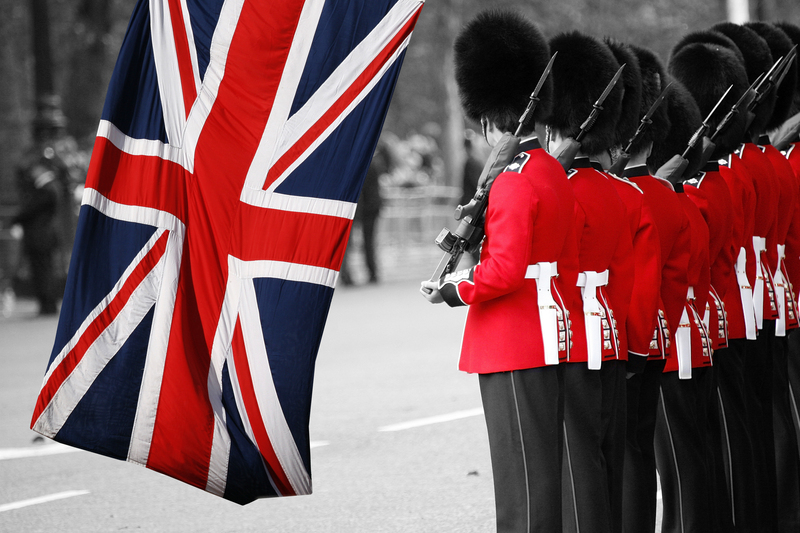The Risks of Moving a Piano Alone: Expert Tips
Posted on 21/05/2025
The Risks of Moving a Piano Alone: Expert Tips
Moving a piano is an ambitious undertaking, even for the most determined do-it-yourselfers. With their unparalleled sound and elegant design, pianos are prized possessions in many homes. However, piano moving is notorious for its challenges and potential dangers. Attempting to move such a heavy, cumbersome, and delicate instrument on your own can pose significant risks to your safety, the instrument, and your property. This comprehensive article explores the risks of moving a piano alone and provides expert tips to ensure your piano remains safe and sound throughout the relocation process.

Why Moving a Piano Is More Dangerous Than You Think
Pianos are not ordinary items. They range from compact uprights to massive grand pianos, and even the smallest models often weigh hundreds of pounds. More importantly, their weight is distributed unevenly, making them unwieldy to handle. The combination of size, weight, and fragility creates a perfect storm of potential accidents. If you're considering moving your piano alone, it's important to understand the real risks involved - both to your health and to the instrument itself.
How Heavy Is a Piano?
- Spinet pianos (the smallest upright) typically weigh 200-400 pounds.
- Standard upright pianos weigh between 400-800 pounds.
- Baby grand pianos can range from 500-600 pounds.
- Concert grand pianos tip the scales at 900-1400 pounds or more!
These numbers highlight just how much brute force, coordination, and logistics are needed for a successful piano move.
The Hidden Dangers of Moving a Piano by Yourself
Even if you recruit a few strong friends, moving a piano alone (without professional help) involves numerous hidden hazards:
- Physical Injury: Lifting hundreds of pounds without proper training significantly increases the risk of back injuries, crushed fingers, and muscle strains. Slips and falls can result in sprained ankles, broken bones, or worse.
- Instrument Damage: Pianos have intricate inner workings. A sudden jolt or drop can cause irreparable harm to the strings, hammers, keys, pedals, or finish. Even minor bumps can knock the instrument out of tune or fracture the frame.
- Property Damage: In the tight corners of a home, it's all too easy for a rolling or slipping piano to gouge walls, shatter doorways, or crack floors. Staircases are particularly treacherous, often resulting in major structural or cosmetic damage during DIY moves.
- Financial Risks: Repairing a damaged piano can cost thousands, and if your piano is valuable or vintage, its loss is irreplaceable. Most home insurance policies won't cover accidents caused by DIY moving attempts.
- Transport Trouble: Even if you get the piano to the door, securing it safely in a vehicle is another challenge. Improper strapping or padding can turn a minor bump in the road into a costly accident.
Case Studies: When DIY Piano Moves Go Wrong
- Injury Example: According to the U.S. Consumer Product Safety Commission, thousands of back injuries occur each year from moving heavy household items. Pianos are among the top culprits.
- Property Damage: In one case, a homeowner caused extensive floor and wall damage moving an upright down the stairs, resulting in over $5,000 worth of repairs--far exceeding the cost of hiring professionals.
- Piano Loss: There are reports of pianos falling off ramps during loading, getting stuck in doorways, or even shattering under their own weight after a drop. Instrument tuners emphasize that many of these incidents leave pianos permanently unplayable.
Physical Dangers to Movers
Let's take a closer look at the personal risks of moving a piano by yourself:
Common Injuries
- Back Strain: Most common due to incorrect lifting posture or overexertion.
- Finger & Hand Injuries: Getting pinched or crushed between the piano and another object.
- Knee & Ankle Injuries: Resulting from slips, trips, or loss of balance under unexpected loads.
- Muscle Tears & Hernias: Often caused by sudden attempts to stop a shifting instrument.
- Serious accidents: There have even been rare but severe cases of life-changing injuries when a piano falls on the mover.
Long-Term Health Consequences
Some injuries, such as herniated discs, can have long-term impacts, possibly requiring surgery and extensive rehabilitation. The risk is simply not worth it, especially when professional alternatives exist.
Risks to Your Piano: What Can Go Wrong?
Pianos are delicate as well as heavy. Internal damage--often invisible at first--can degrade the sound and playability of your instrument:
- Frame Cracks: The cast-iron frame supports thousands of pounds of string tension. A single drop or twist can crack the frame, destroying the instrument.
- Soundboard Damage: The thin, sensitive soundboard amplifies every note. Pressure or bending can warp it, distorting tone forever.
- Key & Pedal Mechanism Issues: Misalignment or broken action components lead to sticky, uneven keys and loss of musical control.
- Finish & Cabinet Scratches: Heavy objects or rough handling leave permanent scars on wood or lacquer surfaces, reducing both beauty and value.
Pianos Require Expert Handling
Professional piano movers not only understand the risks of moving a piano alone, but possess the specialized tools and techniques to avoid them. They use custom dollies, harnesses, moving pads, and ramps - and, critically, know how to maneuver a piano without damaging its fragile interior.
Top Mistakes People Make When Moving a Piano Without Professional Help
- Incorrect Lifting Habits: Bending at the waist or lifting with the back instead of squatting and pushing with legs.
- Poor Planning: Underestimating the need for disassembly, or not measuring doors and tight corners in advance.
- Lack of Proper Tools: Trying to move a piano without a dolly, straps, or protective padding.
- Not Enough Manpower: Even upright pianos typically require at least four strong, experienced movers.
- Insufficient Transport: Using rental trucks or personal vehicles not designed for safely securing and cushioning pianos.
Expert Tips for Safe Piano Relocation
While the risks of moving a piano alone are high, if you still plan to tackle the move yourself, it's critical to follow these safety tips for piano moving:
1. Prepare Properly
- Measure every passageway: Door frames, hallways, stairs, and elevators must all be wide and tall enough for the instrument.
- Clear all obstacles: Remove rugs, furniture, and debris from the moving path.
- Communicate: Everyone involved must know the route, procedures, and contingency plans.
2. Use the Right Moving Equipment
- Piano dolly: Essential for upright pianos; grand pianos often need a "piano board" for careful disassembly and movement.
- Heavy-duty straps: For securing and controlling the piano during lifting and transport.
- Moving blankets and padding: To protect the finish and internal mechanisms.
3. Protect Yourself
- Wear gloves: For better grip and to prevent blisters.
- Use steel-toed shoes: Feet often bear the brunt in a mishap.
- Lift with your legs: Never your back or arms alone. Use team-lifting whenever possible.
4. Never Rush
- Take your time: Rushing is a leading cause of mistakes and injuries.
- Don't improvise: If you hit an obstacle or challenge, stop and call a professional. Never force the piano or reroute on the fly.
5. Protect Your Piano During Transit
- Secure the lid and keyboard cover: Prevent swinging or accidental openings during movement.
- Keep it upright: Laying a piano on its side can irreparably damage the frame and soundboard.
- Minimize jostling: Drive slowly, use gentle ramps, and avoid sudden starts or stops.
When Should You Call in Professional Piano Movers?
For most people--and in almost every scenario--calling experienced piano movers is the best choice. Here's when you should absolutely leave it to the pros:
- Moving a grand piano or large upright.
- Navigating stairs, elevators, or narrow passageways.
- Relocating high-value, vintage, or sentimental pianos.
- When you don't have enough able-bodied helpers.
- Lacking specialized moving equipment.
Professional movers are licensed, insured, and experienced with piano transport safety. They know how to protect your instrument--and themselves--from the dangers of improper lifting, carrying, or transportation.
Final Thoughts: Prioritize Safety and Your Piano's Value
Moving a piano alone is never as simple as it seems. The risks of personal injury, instrument damage, and property destruction are simply too great to ignore. Even a smooth DIY move is likely to knock your piano out of tune or leave hidden damage that spoils its tone.
The smart--and safest--move is to trust your instrument to a team of professionals with the right equipment and expertise. If you must attempt a DIY piano move, at the minimum use proper tools, organize a skilled team, and never compromise on safety. Remember: Your health and your piano are worth the investment!

Frequently Asked Questions About Moving Pianos
1. Can two people move an upright piano alone?
Generally, no. Most professionals recommend a minimum of three to four people, along with proper equipment, for even the smallest upright pianos. The risk of injury or dropping the instrument with fewer people is extremely high.
2. Is it worth it to hire professional piano movers?
Absolutely. Compared to the potential costs of injuries, repairs, or loss of your instrument, professional movers are a smart investment that ensures safety and peace of mind.
3. Can moving a piano affect its sound?
Yes. Rough handling, temperature changes, or improper positioning during transit can all damage delicate components or knock the instrument out of tune.
4. How can I minimize risk if I have to move a piano myself?
Never attempt to move a piano alone. Use at least three strong, experienced helpers, plan every step, use professional-grade moving equipment, and wear personal safety gear. If in doubt, stop and consult an expert.
5. What should I do if my piano is damaged during a move?
Consult a professional piano technician for an assessment and repairs. Don't attempt to tune or fix internal damage yourself, as this can worsen the problem.
Conclusion
Understanding the risks of moving a piano alone is the first step toward making the best decision for your instrument and your wellbeing. When in doubt, remember that professional moving help is always the safest note to play.



